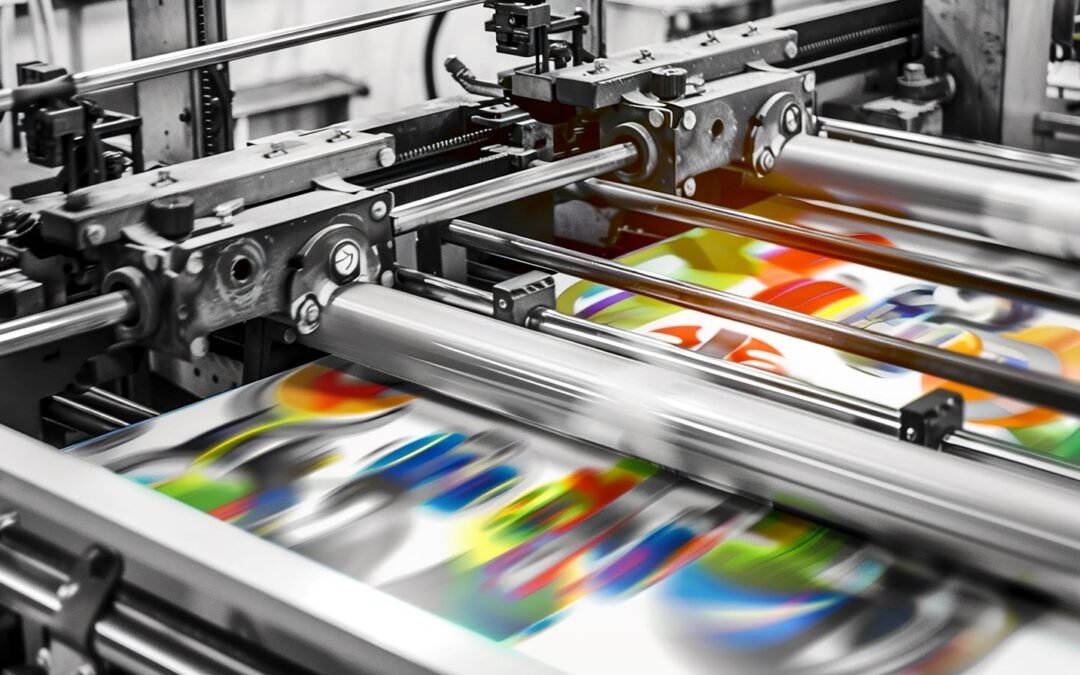Offset printing is a widely used printing technique that produces high-quality, large-format prints. It’s particularly popular for commercial printing jobs like books, magazines, newspapers, and packaging.
How Does Offset Printing Work?
- Image Transfer: The printing process begins with a plate that has the desired image or design etched onto its surface. This plate is then inked.
- Offset to Blanket: The inked plate transfers the image to a rubber blanket. This indirect transfer is where the term “offset” comes from.
- Blanket to Paper: The rubber blanket then transfers the image from the plate to the paper. This allows for even ink distribution and high-quality results.
Key Advantages of Offset Printing
- High-Quality Prints: Offset printing produces crisp, sharp, and vibrant prints with excellent color accuracy.
- Versatility: It can handle a wide range of paper types and sizes, making it suitable for various printing applications.
- Cost-Effective: For large print runs, offset printing is often more cost-effective than other methods like digital printing.
- Consistent Quality: Offset presses are designed for precision and consistency, ensuring that each print is identical to the last.
Common Uses of Offset Printing
- Books and Magazines: Offset printing is the preferred method for printing books and magazines due to its ability to handle large print runs and produce high-quality results.
- Newspapers: Many newspapers are still printed using offset presses, although digital printing is becoming more common.
- Packaging: Offset printing is used to create a variety of packaging materials, including boxes, labels, and brochures.
- Posters and Flyers: Offset printing is ideal for producing large-format posters and flyers.
Types of Offset Presses
- Sheet-Fed Presses: These presses handle individual sheets of paper, making them suitable for a wide range of applications.
- Web Presses: Web presses print on continuous rolls of paper, making them ideal for large-volume jobs like newspapers and magazines.
Offset Printing vs. Digital Printing
While both offset and digital printing have their advantages, there are key differences between the two:
- Cost: Offset printing is generally more cost-effective for large print runs, while digital printing is better suited for smaller quantities.
- Turnaround Time: Digital printing offers faster turnaround times, while offset printing may require more lead time.
- Customization: Digital printing offers more flexibility for customization and personalization.
Choosing the Right Printing Method
The best printing method for your project will depend on factors such as:
- Print Volume: Large print runs are typically more cost-effective with offset printing.
- Quality Requirements: Offset printing is known for its high-quality output.
- Turnaround Time: Digital printing offers faster turnaround times.
- Customization Needs: Digital printing is better suited for customization and personalization.
In conclusion, offset printing is a versatile and reliable printing method that continues to be a popular choice for a wide range of applications. By understanding the basics of offset printing and its advantages, you can make informed decisions about your printing projects. speed, cost-efficiency, and high-quality visuals makes it indispensable for event planners looking to create memorable experiences. With advancements in digital printing technology, we can expect even more innovative applications and environmentally friendly options, ensuring that Dubai remains at the forefront of the global event scene.
Whether you’re organizing a corporate event, a fashion show, or a festival, consider how digital printing can elevate your branding and visuals to create a truly unforgettable experience.


